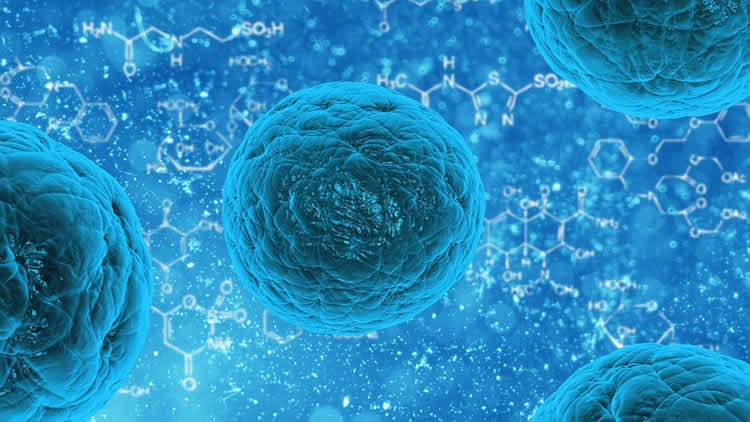Summary: Study shows how ALS may impact neurons as they mature.
Source: Cedars Sinai Medical Center.
Cedars-Sinai scientists propose a solution after finding that current engineered cells are too ‘young’ to accurately model the fatal nerve disorder
Cedars-Sinai scientists are seeking to build an improved stem-cell model of amyotrophic lateral sclerosis (ALS) to accelerate progress toward a cure for the devastating neurological disorder. Their findings demonstrate that current models can be enhanced by the aging of motor neurons to show how ALS damages cells later in life.
ALS, also known as Lou Gehrig’s disease, affects more than 12,000 people in the U.S., according to the National Institutes of Health. It typically strikes between the ages of 40 and 70, according to the ALS Association. There are no effective treatments, and most patients suffer paralysis and die within five years of diagnosis.
To understand ALS, researchers at the Cedars-Sinai Board of Governors Regenerative Medicine Institute are creating induced pluripotent stem cells (iPSCs) derived from patients’ skin cells. By altering several genes in patients’ cells, the investigators can return these cells to their embryonic, or stem-cell, state. These specially engineered stem cells reproduce indefinitely in laboratory dishes, where their abnormalities and processes can be examined in detail. In the case of ALS, these cells are used to grow spinal motor neurons and study them.
A multi-center team led by Clive Svendsen, PhD, and Ritchie Ho, PhD, has found that iPSC versions of spinal motor neurons typically used to model ALS resemble immature or fetal neurons more than mature adult neurons in adults affected by the disease. In a detailed analysis of large sets of genes, the investigators also showed how ALS may impact neurons as they mature and exacerbate age-related changes.

Taken together, the findings suggest that investigators need to devise ways to alter iPSC versions of spinal motor neurons to more closely resemble older versions found in adult ALS patients, the scientists said. “Using motor neurons to model neurological disease may require their aging in a dish,” said Ho, the first author of an article on the study, published online July 18 in the journal Nature Neuroscience.
To help researchers tackle the task of aging the stem cells, the group identified a series of genetic markers to assess cell maturity and age.
“By knowing the gene expression patterns that define adult motor neurons in the spinal cord, we can push the iPSC-derived motor neurons in the right direction in the petri dish,” said Svendsen, director of the Cedars-Sinai Board of Governors Regenerative Medicine Institute and professor of Medicine and Biomedical Sciences. Svendsen was the senior author of the article.
Funding: Research reported in this article was supported by the ALS Association, the Project ALS Foundation and the National Institute of Neurological Disorders and Stroke of the National Institutes of Health under award number U54NS091046-01.
Source: Jane Engle – Cedars Sinai Medical Center
Image Source: This NeuroscienceNews.com image is adapted from the Cedars Sinai Medical Center press release.
Original Research: Abstract for “ALS disrupts spinal motor neuron maturation and aging pathways within gene co-expression networks” by Ritchie Ho, Samuel Sances, Genevieve Gowing, Mackenzie Weygandt Amoroso, Jacqueline G O’Rourke, Anais Sahabian, Hynek Wichterle, Robert H Baloh, Dhruv Sareen and Clive N Svendsen in Nature Neuroscience. Published online July 18 2016 doi:10.1038/nn.4345
[cbtabs][cbtab title=”MLA”]Cedars Sinai Medical Center. “Aging Stem Cells to Speed Up Progress Toward ALS Treatments.” NeuroscienceNews. NeuroscienceNews, 19 July 2016.
<https://neurosciencenews.com/als-stem-cell-aging-4708/>.[/cbtab][cbtab title=”APA”]Cedars Sinai Medical Center. (2016, July 19). Aging Stem Cells to Speed Up Progress Toward ALS Treatments. NeuroscienceNews. Retrieved July 19, 2016 from https://neurosciencenews.com/als-stem-cell-aging-4708/[/cbtab][cbtab title=”Chicago”]Cedars Sinai Medical Center. “Aging Stem Cells to Speed Up Progress Toward ALS Treatments.” https://neurosciencenews.com/als-stem-cell-aging-4708/ (accessed July 19, 2016).[/cbtab][/cbtabs]
Abstract
ALS disrupts spinal motor neuron maturation and aging pathways within gene co-expression networks
Modeling amyotrophic lateral sclerosis (ALS) with human induced pluripotent stem cells (iPSCs) aims to reenact embryogenesis, maturation and aging of spinal motor neurons (spMNs) in vitro. As the maturity of spMNs grown in vitro compared to spMNs in vivo remains largely unaddressed, it is unclear to what extent this in vitro system captures critical aspects of spMN development and molecular signatures associated with ALS. Here, we compared transcriptomes among iPSC-derived spMNs, fetal spinal tissues and adult spinal tissues. This approach produced a maturation scale revealing that iPSC-derived spMNs were more similar to fetal spinal tissue than to adult spMNs. Additionally, we resolved gene networks and pathways associated with spMN maturation and aging. These networks enriched for pathogenic familial ALS genetic variants and were disrupted in sporadic ALS spMNs. Altogether, our findings suggest that developing strategies to further mature and age iPSC-derived spMNs will provide more effective iPSC models of ALS pathology.
“ALS disrupts spinal motor neuron maturation and aging pathways within gene co-expression networks” by Ritchie Ho, Samuel Sances, Genevieve Gowing, Mackenzie Weygandt Amoroso, Jacqueline G O’Rourke, Anais Sahabian, Hynek Wichterle, Robert H Baloh, Dhruv Sareen and Clive N Svendsen in Nature Neuroscience. Published online July 18 2016 doi:10.1038/nn.4345






